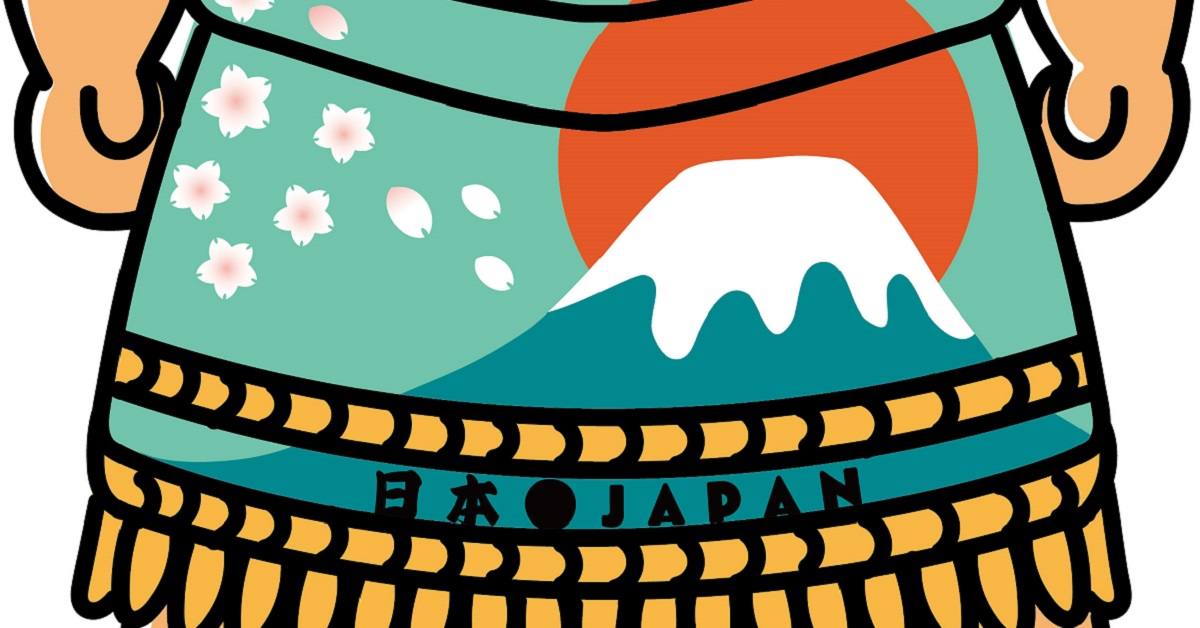The kesho-mawashi, worn by sekitori during the ceremonial ring-entering ritual, is one of the most visually stunning and culturally significant elements in sumo. Crafted from premium fabrics such as Hakata-ori and Nishijin-ori, and adorned with gold and silver embroidery depicting dragons, tigers, and local landscapes, it is both an art form and a symbol of pride for the wrestler.
What is a Kesho-mawashi?
A kesho-mawashi is a lavish, decorative apron-like belt worn by sekitori (wrestlers ranked Jūryō and above) during the dohyō-iri. It is not used in actual matches, but only in ceremonial contexts. It measures approximately 6 to 7 meters in length and is made from premium textiles such as Hakata-ori and Nishijin-ori. The front panel (mae-dare) is embroidered with gold and silver threads depicting local landscapes, dragons, tigers, and other motifs. These embroidered designs often represent the wrestler’s birthplace or the sentiments of their supporters, making each piece unique.
Basic Specifications of a Kesho-mawashi
| Item | Details |
|---|---|
| Purpose | Ring-entering ceremony |
| Length | Approx. 6–7 m |
| Materials | Hakata-ori, Nishijin-ori |
| Decoration | Gold and silver thread embroidery |
| Motifs | Local scenery, dragons, tigers, flowers, birds |
Origins and Historical Development
The kesho-mawashi evolved from the shimekomi (match belt). During the Genroku era (1688–1704), wrestlers wore shimekomi made of colored silk or patterned fabric, embroidered for decoration. However, embroidered threads often tangled with the hands and fingers, causing practical issues during bouts. This led to the creation of a separate, ceremonial garment worn only during the dohyō-iri. By the Tenmei era (1781–1789), the kesho-mawashi had taken on a form very close to what we see today.
Timeline of Kesho-mawashi Development
| Era | Event |
|---|---|
| Genroku (1688–1704) | Colored silk and embroidered shimekomi used in matches |
| Mid-Edo period | Separated due to thread tangling problems |
| Tenmei (1781–1789) | Modern form of kesho-mawashi established |
Meanings Behind the Decorations and Design Variety
The embroidery on a kesho-mawashi is far more than mere decoration. It can depict the wrestler’s hometown scenery, auspicious animals such as dragons, tigers, cranes, and turtles, or even the logo of a sponsor. These designs express the wrestler’s individuality while also making a strong visual impression on spectators.
Symbolic Meanings of Common Motifs
| Motif | Meaning |
|---|---|
| Dragon | Strength and protection |
| Tiger | Courage and ferocity |
| Crane | Longevity |
| Turtle | Prosperity |
| Cherry blossom | Symbol of Japan, beauty |
The Relationship Between Kesho-mawashi and the Wrestler
For a wrestler, the kesho-mawashi is not just attire but a symbol of pride and presence. During the dohyō-iri, spectators witness the vivid colors and patterns as the wrestler performs ceremonial movements. This visual effect heightens the sense of anticipation before a bout and adds to the ceremonial atmosphere. Moreover, kesho-mawashi are often gifts from supporters or sponsors, carrying the collective goodwill of those who back the wrestler’s career.
The Kesho-mawashi’s Appeal from an International Perspective
To foreign visitors, the kesho-mawashi is one of the most iconic symbols of sumo and Japanese culture. The luxurious embroidery and distinctive form embody Japanese aesthetics and craftsmanship. Particularly, the shine of gold and silver threads and the texture of the woven fabric make it a favorite subject for photography, frequently featured in travel guides and on social media.
The Role of the Kesho-mawashi in Modern Times
In contemporary sumo, the kesho-mawashi still plays a vital role. Beyond preserving the formality of the dohyō-iri, it serves as a tool for building a wrestler’s brand image and for sponsor promotion. In recent years, design freedom has increased, with more kesho-mawashi incorporating modern graphics and elements of pop culture alongside traditional motifs.
Characteristics of Modern Kesho-mawashi
| Feature | Details |
|---|---|
| Design diversity | Incorporation of anime or character designs |
| Material improvements | Lighter weight, greater durability |
| Overseas exhibitions | Displayed at international sumo events |
| Promotional use | Sponsor logos prominently featured |
Conclusion
The kesho-mawashi is an essential cultural asset symbolizing the beauty and formality of sumo. Its rich decoration, historical background, and deep connection to wrestlers fascinate people both in Japan and around the world. While preserving tradition, it continues to evolve with new designs and applications, ensuring that it will remain an indispensable part of sumo culture in the future.





コメント